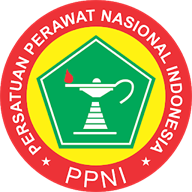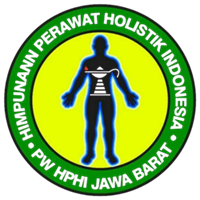Relationship of Mobilization With Fecal Impact Events In Post Laparatomy Patients
DOI:
https://doi.org/10.52221/jvnus.v1i2.157Keywords:
Mobilization, Fecal Impact, Laparotomy, PatientAbstract
Introduction: In postoperative patients, a patient requires maximum care to support the postoperative wound healing process for healing the patient's healing. The goals of patient care after laparotomy surgery include: Reducing surgical complications, accelerating healing, restoring patient functions as before surgery, maintaining patient self-concept, and preparing patients to go home, this is what makes postoperative patients require maximum care. Objective: This study aims to determine the relationship between mobilization and the incidence of fecal impaction in post-laparotomy patients. Method: the method used observational research, the population of this study was all post-laparotomy patients in the Wijaya Kusuma BLUD RSU Banjar City from July-August 2014 as many as 33 people using the consecutive sampling technique. Result: The results of statistical tests using the Chi-Square Test obtained a value of 0.000. So, it can be concluded that there is a relationship between mobilization and the incidence of fecal impaction in post-laparotomy patients. Conclusion: There is a relationship between mobilization and the incidence of impacted feces in postoperative patients, and we hope that future researchers can develop broader research with the latest knowledge and more respondents and use experimental methods
Downloads
References
Arikunto, S. (2009). Manajemen Penelitian Edisi Revisi. Jakarta Rineka Cipta.
Campbel. (2003). Mobilisasi Fisik.
Dahlan, M. S. (2011). Statistik Untuk Kedokteran Dan Kesehatan. Jakarta : Salemba Medika
Firmansyah, A., Setiawan, H., Suhanda, S., Fitriani, A., & Roslianti, E. (2018). Pendidikan Kesehatan kepada Keluarga “Perawatan Luka Pasca Khitan Metode Konvensional yang Optimal”. ABDIMAS: Jurnal Pengabdian Masyarakat, 1(2), 53-56.
Hasan, I. (2005). Analisis Data Penelitian Dengan Statistik. Jakarta : Bumi Aksara.
Hidayat, A. A. A. (2007). Metode Penelitian Keperawatan dan Teknik Analisa Data. Cetakan Pertama. Jakarta : Salemba medika.
Kinunen. (2011). Pengaruh Mobilisasi Terhadap Konstipasi.
Notoatmodjo, S. (2010). Ilmu Perilaku Kesehatan. Jakarta : Rineka Cipta.
Nursalam. (2008). Konsep dan penerapan metodologi Penelitian Ilmu Keperawatan : Skripsi, Tesis, dan Instrumen Penelitian Keperawatan. Jakarta ; Salemba Medika.
Rekam Medik. (2013). Kasus Bedah Laparatomi RSUD Kota Banjar. Banjar : RSUD Kota Banjar
Potter & Perry. (2005). Fundamental Of Nursing vol 1 dan 2. Jakarata : EGC
Ross. (2005). Mobilitas dan Diet.
Sastroasmoro & Ismael. (2005). Prinsip Metodologi Kesehatan. Jakarta : Penerbit FK UI
Smeltzer & Bare. (2008). Keperawatan Medikal Bedah Jilid 1. Jakarta : EGC
Sugiyono. (2012). Metode Penalitian Kuntitatif, Kualitatif Dan R&D. Bandung : Alfabeta
Syarifudin, B. (2010). Panduan TA Keperawatan dan Kebidanan dengan SPSS. Yoyakarta : Grafindo Litera Media.
Tarwoto & Watonah.(2006). Kebutuhan Dasar Manusia dan Proses Keperawatan (Edisi 3). Jakarta : Penerbit Salemba Medika
Yemima. (2009). Pengaruh Imobilisasi Pada Klien Stroke Yang Mengalami Gangguan Fungsi Motorik Terhadap Kejadian Dekubitus di Rumah Sakit Mardi Rahayu Kudus.
Downloads
Published
How to Cite
Issue
Section
License
Copyright (c) 2019 JURNAL VNUS (Vocational Nursing Sciences)

This work is licensed under a Creative Commons Attribution 4.0 International License.
















